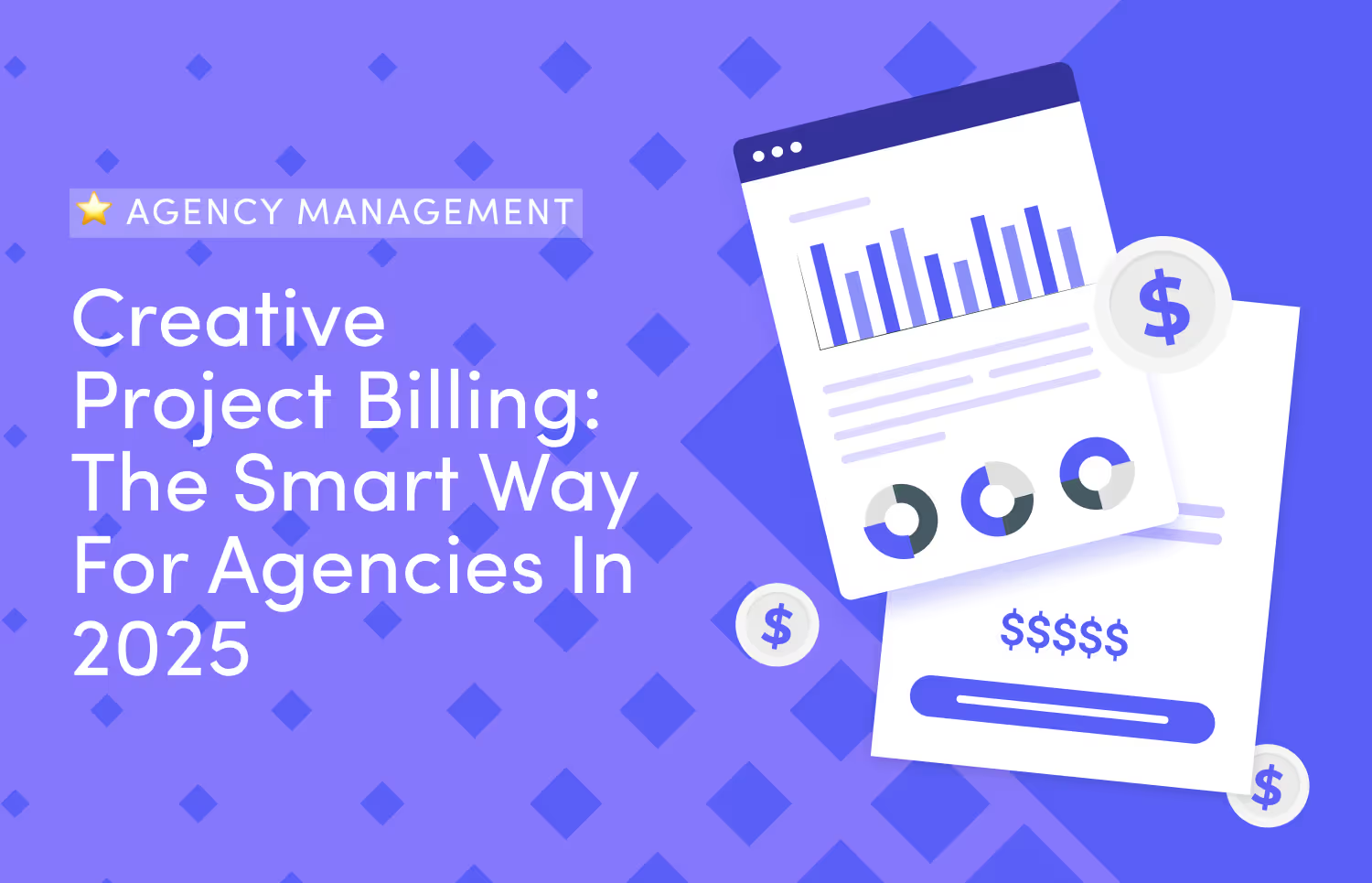Creative Project Billing: The Smart Way for Agencies in 2026
Simplify project billing for your agency. Automate invoicing, track payments, and keep client billing organized with ManyRequests.




You’ve nailed your creative process, so why is project billing still the bottleneck? Here’s the issue: manual tracking, delayed project invoicing, unclear retainer usage—they are clunky and inconsistent. While the rest of your agency runs on systems, billing may still be that one part of your workflow that hasn’t caught up.
Smart billing systems in 2026 are clear, transparent, and flexible. They move as fast as your projects do, support retainers, and lock in cash flow without all the admin drag. In this blog, we’ll break down what “smart project billing” looks like and how you can implement it.

Regarding getting paid, most creative agencies default to one of two pricing models: one-off projects or monthly retainers. Let's compare the mechanics of each and understand their nuances.
This is the traditional model for project-based work. You scope the creative work, set a timeline, agree on a price, and get to work. Project billing is typically tied to the completion of specific milestones or upon final delivery.
Pros:
Cons:
With a retainer model, the client pays your agency a fixed fee on a recurring basis (typically monthly) in exchange for a predetermined amount of your team's time and resources. This is the subscription model for creative agencies.
Pros:
Cons:
Most “mature” creative agencies don’t choose one or the other—they use a hybrid project billing model that combines the best of both worlds. This lets them maintain a stable income while capturing the upside of side projects. It also aligns better with how creative work actually happens in 2025, that some needs are predictable and recurring, but others are time-bound.
Also, most service agencies naturally gravitate towards a hybrid pricing model by offering:
You've got the basics of the billing model down. Now, let's discuss the strategies for smarter project billing.

Scope creep often starts with vague billing terms. The initial proposal should clearly outline not just what you'll deliver, but exactly how and when you'll bill for it. Be crystal clear about payment terms, late fees, and what happens if the scope changes.
Let's be real—you didn't start a creative agency to spend your time chasing invoices. So, if possible, automate your billing ecosystem. This is about saving time and, at the same time, creating a professional experience for your clients. Clients see you as more established and trustworthy when your billing runs smoothly. Here’s what you can automate:
And for monthly billing with optional add-ons for extra work? Your billing or project management platform should allow you to set up automated monthly invoices for the retainer fee and easily add line items to invoices for extra work (detailing the service, rate, and quantity).
Breaking projects into logical phases is the oldest trick in the agency playbook. But it works for a reason. When payment coincides with meaningful progress, everyone wins. The client feels comfortable paying because they're seeing tangible progress, and you get steady cash flow throughout the project.
Structure your milestones around natural project phases like Discovery, Design, Development, and Delivery. Each phase becomes a payment trigger, and your clients will be engaged with progress.
Ditch the scattered spreadsheets and endless email threads. Like other top-performing creative agencies, we have a single source of truth for project status and payment tracking. This gives both your team and the client complete transparency. Here's what a truly effective dashboard should show you at a glance:
🔥 Pro tip: Consider a platform that includes a client portal. A good client portal shows exactly where the project stands, what's been delivered, what's been paid, and what's coming next—it's just a central place to engage with your agency.
ManyRequests is built for modern creative agencies that want their billing to be as smooth and scalable as their client work. Here’s a breakdown of its key features for streamlining project billing.
These are ManyRequests’ custom invoices for ad-hoc work. You can now generate invoices directly from individual tasks or requests. Just mark the task as billable, generate an invoice on the spot, and send it with one click. Payment links and email notifications are built in. No more lost revenue from forgotten extras. Clients see exactly what they’re paying for, and you get paid faster for every piece of added work.
Most agencies live in a hybrid world—steady retainer work with bursts of project-based add-ons. ManyRequests supports both. You can create project invoicing structures that match how you actually work while keeping payments consistent and predictable. For monthly retainers or service bundles. Set it once, and the system handles the rest. And for anything outside the norm—project phases, scope changes, custom work—bill anytime.
The platform has integrated tools to automate payment reminders and keep clients informed. You can set up automated email reminders to be sent to clients and customize the messaging to maintain a professional tone.
Likewise, clients receive automated notifications when a new invoice is issued, when a payment is received, and potentially for other billing-related events.
Every client gets access to a branded client portal—their home base for project updates, file sharing, and project billing.
Clients can submit new requests, view all invoices (past and present), make payments directly, and track the status of ongoing work. Plus, your team sees exactly what's been invoiced, paid, and outstanding. All communications related to billing are documented and accessible. So, project invoicing becomes part of the overall client experience—everything’s transparent, organized, and easy to manage for both sides.
Thriving creative agencies mastered the basics of operations that keep cash flowing and clients happy. Project billing challenges can weaken even the most talented teams. So in 2025, your creative work deserves a just as streamlined system. ManyRequests is the all-in-one solution built for you.
The software brings your creative projects, clients, and billing workflow under one intuitive platform. That’s clear communication, a self-service portal, and transparent billing. And your team will love the simplified workflows and reduced administrative burden. Sign up for a free trial of ManyRequests today.